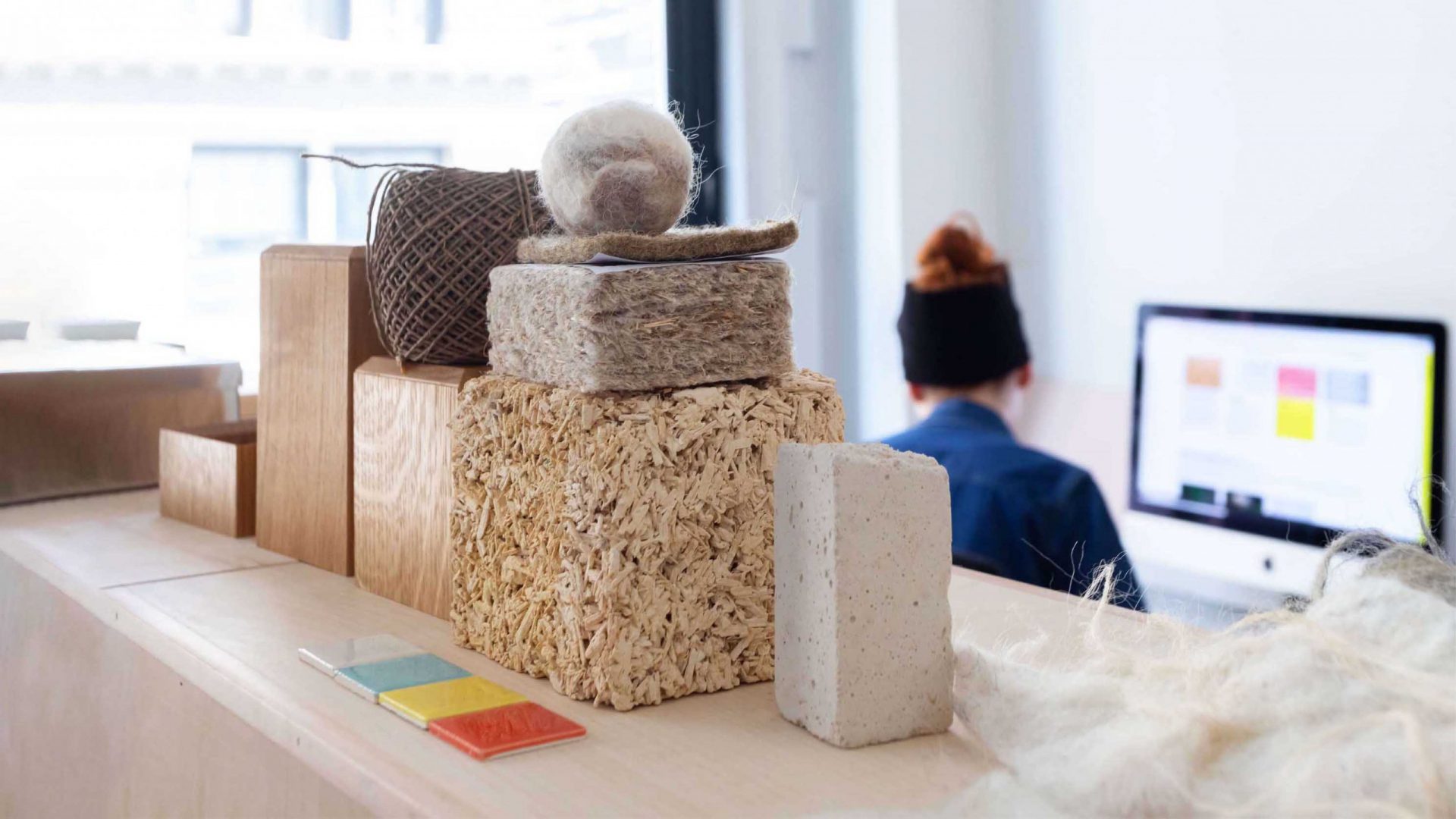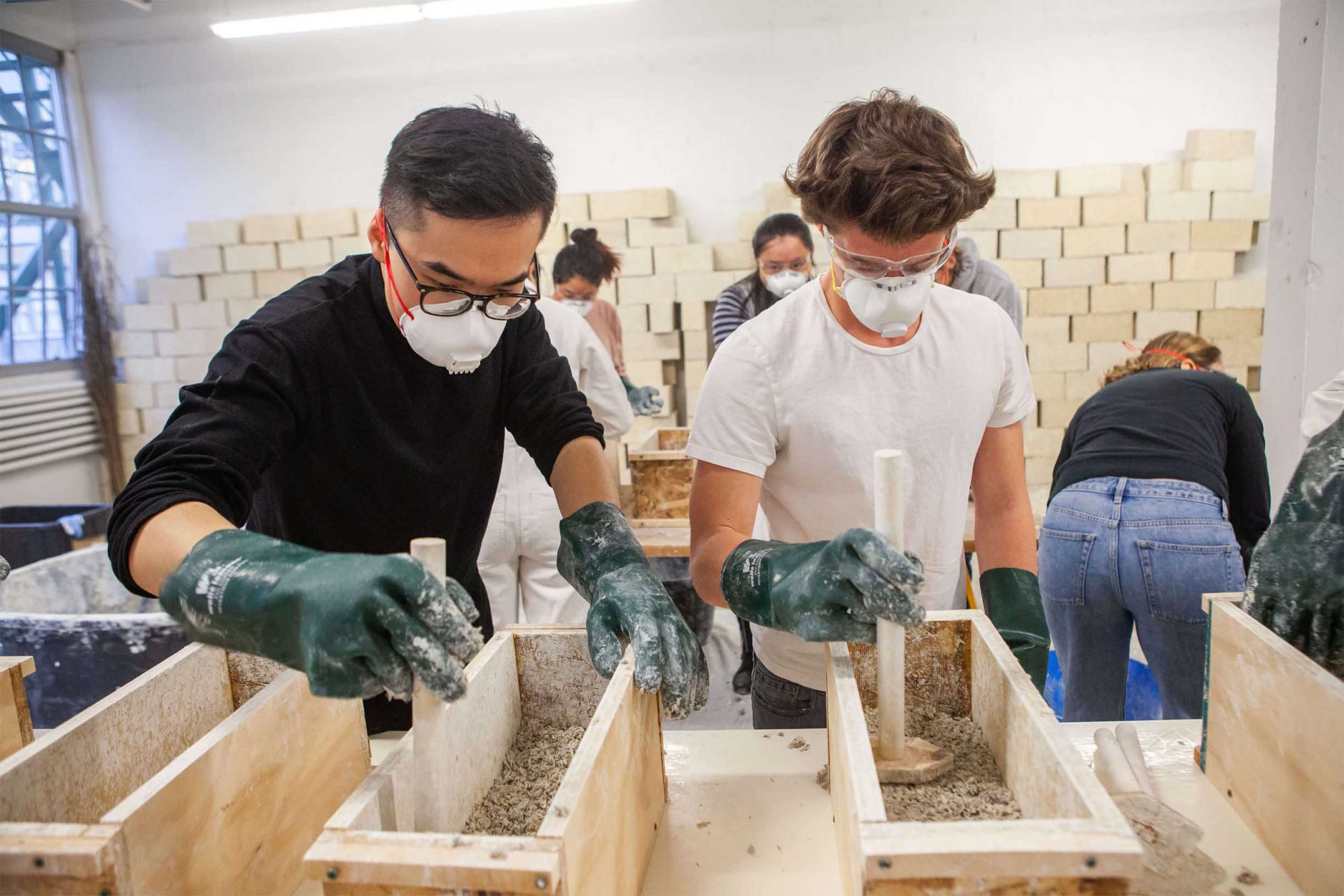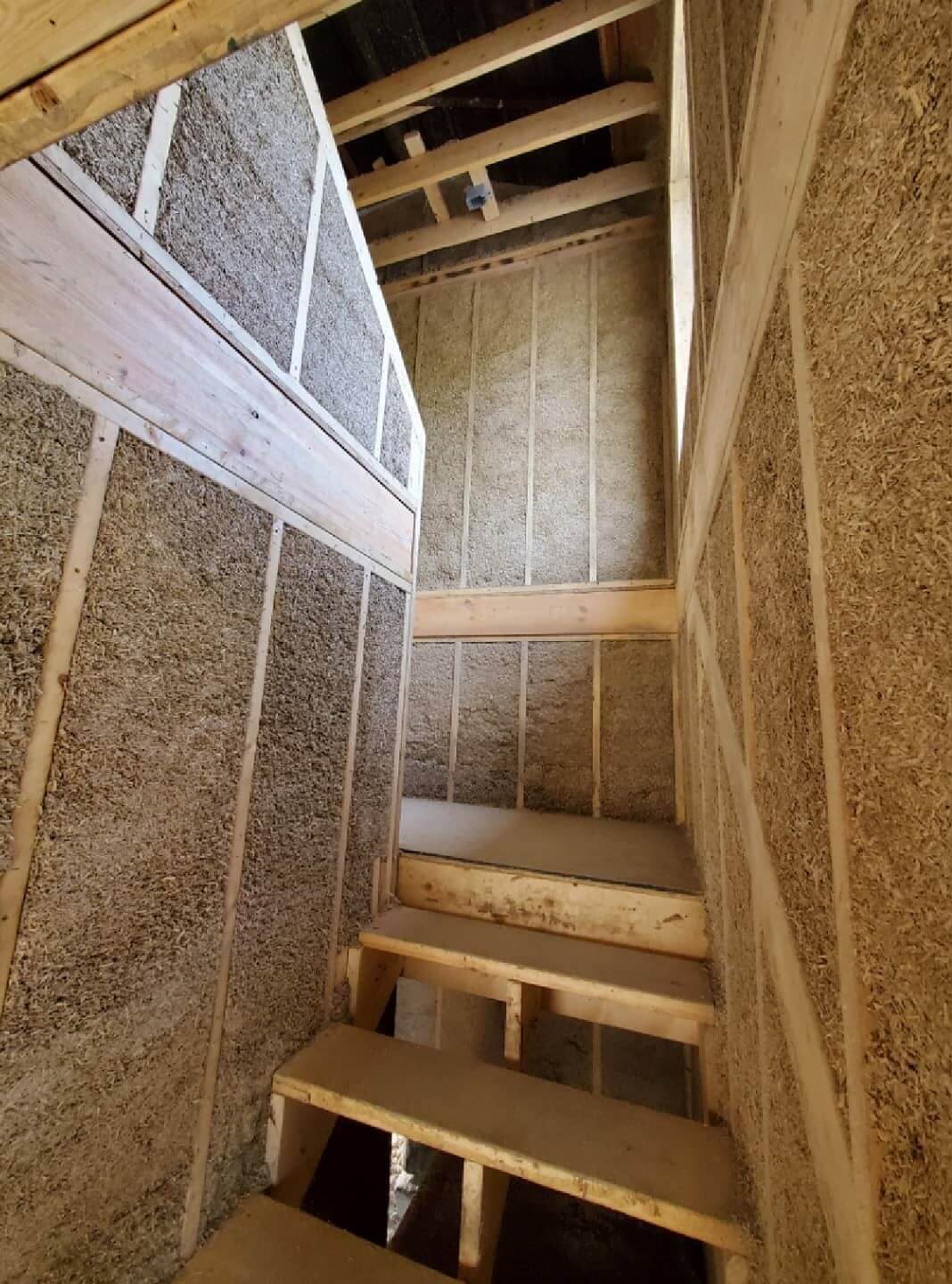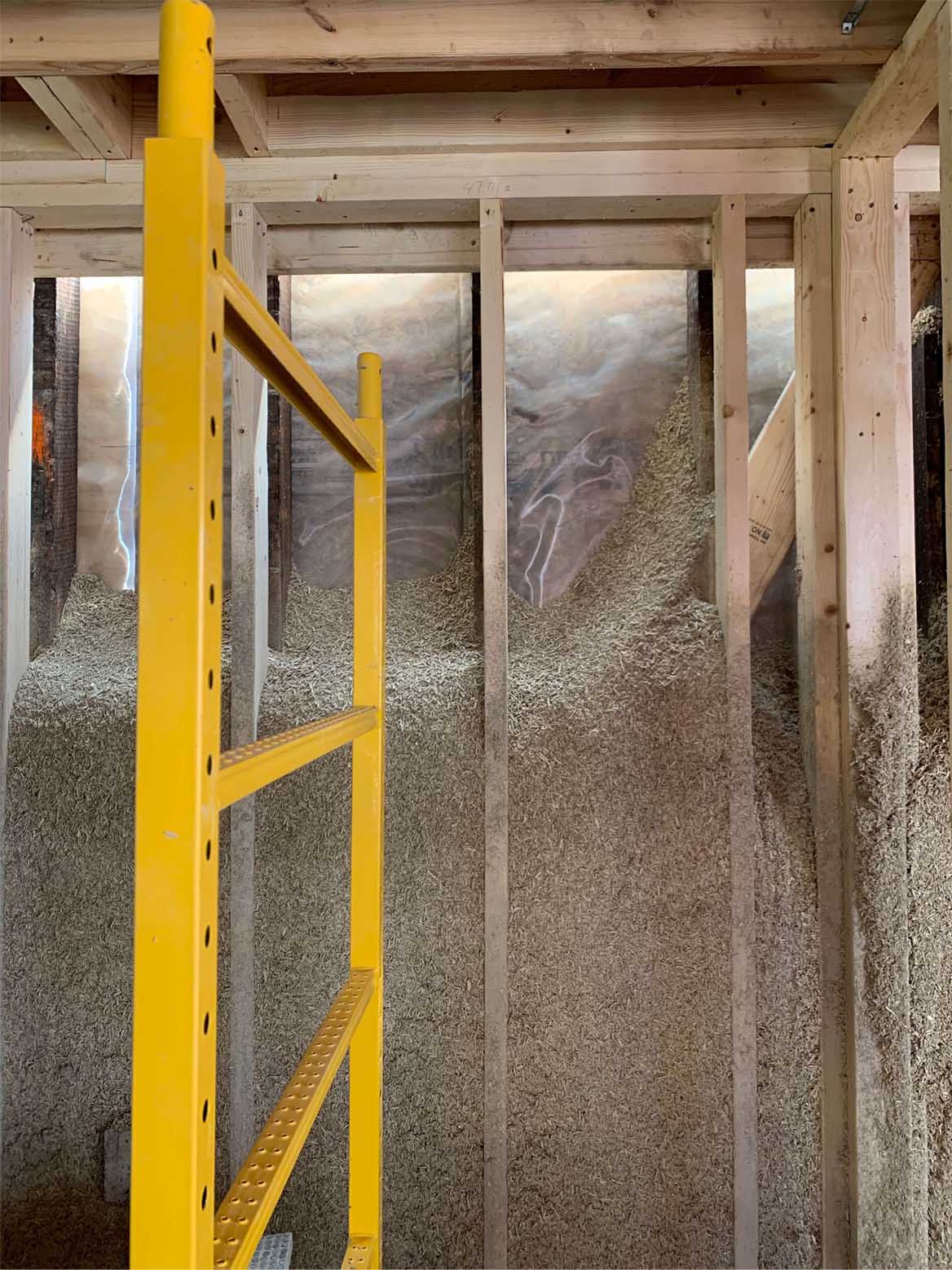What’s in the materials we’re building our homes with? – Interview with Healthy Materials Lab

Healthy Material Lab is raising awareness about the damages caused by the building industry and is leading us into new ways of creating healthier spaces.
“Our goal is to make healthier places for all people”, the Healthy Materials Lab is placing people’s health at the core of all design decisions. The design research lab is run by diverse graduate students, alumni, and faculty members from Parsons School of Design.
More and more studies show that building products directly affect human health, and the Healthy Materials Lab is raising awareness about the issue. It wants to educate designers and architects about the health damages caused by the building industry and to create resources for the next generation of designs and architects to make healthier lives for all.
The Healthy Material Lab also includes the Donghia healthier Materials Library, a resource center helping designers make responsible materials decisions. It offers guiding strategies and hands-on examples of products making positive impacts on human health, environmental justice, and social equity.
Dedicated to a world in which people’s health is placed at the center of all design decisions, how did the journey for Healthy Materials Lab begin?
Healthy Materials Lab: “Parsons Healthy Materials Lab was founded by Architect Alison Mears and Interior Designer Jonsara Ruth. Together with the other partners in the Healthy Affordable Materials Project, HML is dedicated to creating a world with healthier homes for all people.
We know that harmful chemicals coat our food, poisonous lead contaminates our water, and carcinogenic flame retardant-filled insulation fills our walls. Indoor air pollution has resulted in an alarming rise in a range of human diseases. In the face of this health crisis, we believe that the building industry must change its priorities, and put people’s health first.“

Aiming at making healthier places for all people to live, why focus on raising awareness about toxins in building products and creating resources for the next generation of designers and architects?
Healthy Materials Lab: “Our goal is to make healthier places for all people. We know that residents––and even decision makers––rarely know what chemicals are inside the building products that surround them every day. A lack of regulation means that the Federal and state governments are not requiring industry to protect people from potentially toxic chemicals.
We raise awareness in both our colleagues and the general public to the problem of toxic chemicals in our buildings and in many consumer products. We want homes to be built using healthier materials, but we know that we have to educate designers and architects about the current state of the industry in order to make a change. We want it to be a standard part of practice for designers to question the materials they use and their potential effect on human health, and to only specify products that are less or toxic free.”

How do you select materials to be featured in your different collections?
Healthy Materials Lab: “Our material collections are carefully selected and vetted. Material ingredient transparency is mandatory. Currently, our minimum threshold is at 75% ingredient disclosure by weight. That is not ideal–we would prefer 100% disclosure and at the same time realistic based on the current material health reality.
Understanding the production process and the ingredient content of building products is not yet common industry practice. Companies are not required to ingredient content to consumers. So asking them to be transparent can often take a significant amount of communication with companies and manufacturers. We observe that discussing human health and transparency with manufacturers helps to move the industry forward and is worth the time we take in the thorough vetting process.”

As a resource for students, faculty, and professionals, how is the Donghia healthier Materials Library structured?
Healthy Materials Lab: “The Donghia healthier Materials Library is a resource on the Parsons campus in New York City for students and practitioners to get to know first hand the materials they’re working with for their projects as well as experience new material options. The library adopts a material health lens to build a collection of healthier product options. The Library has additionally been working on a framework with Brightworks Sustainability to assess materials in six primary categories of impact: health, carbon, circularity, water, waste and social.
The library is located adjacent to the design studios so students can access the samples and get the guidance they may be seeking for better design and construction materials for their projects.”

Based on the importance of healthy materials through research, demonstrations and education, which current projects are you working on?
Healthy Materials Lab: “The project we’re currently most excited about is the PA Hemp Home, a HempLime home renovation. The home has been designed as healthy, affordable, and accessible housing. DON Enterprise in New Castle, PA is leading the collaborative project, which is called “PA Hemp Home” and is supported by the Pennsylvania Department of Agriculture.
HempLime is a sustainable, healthy material that can be used to retrofit or construct the walls of affordable housing. Industrial hemp is a plant that grows without the use of pesticides or herbicides and requires little water. Plants, especially those with cellular structures like hemp, are natural storage banks for carbon and are a renewable resource.”
Discover more innovative construction materials, don’t miss FabBRICK reinvents construction materials with recycled textile waste.

“Lime is made from limestone, a sedimentary rock which makes up 8% of the earth’s crust and is one of our planet’s most common building materials. The combination of these two materials with water creates HempLime, a sustainable and resilient material that can be used in walls and ceilings to replace more toxic petrochemically based products. This new type of construction material is viable and ready to be scaled across the country.
The project is under construction, the new HempLime walls have been installed and drying, and ready for the next steps.“
How would you define the relationship between design and engineering while developing healthier materials?
Healthy Materials Lab: “We are focusing on plant and mineral-based building products as alternatives to common more toxic building products. Often we refer back to earlier, historic uses of these products in traditional construction to learn how we could adopt these practices in current construction practices. This strategy requires us to understand both construction and structural systems, and adapt them to accommodate new methods using new materials.
We look to material sciences to evaluate the performance characteristics of new products to make sure they meet the pragmatic concerns of current buildings such as material integrity, water resistance, thermal performance and flame resistance.”

What is next for Healthy Materials Lab?
Healthy Materials Lab: “We are continuing our exploration of hemplime building in residential construction on the White Earth reservation in Minnesota. Winona LaDuke has asked us to consult on the design and construction of new Elder housing for women and their extended families.
Winona combines economic and environmental approaches in her efforts to create a thriving and sustainable community on the reservation and for other Indigenous populations across the country. Indigenous land and the rights to land and housing are vital issues for nations. This project will support local hemp production and use and create new models for indigenous housing.
Season 2 of our podcast Trace Material launches June 16th! This season we’re investigating the social history of plastic. A little over a century ago, plastic was born out of a test tube in a chemist’s garage. In just a few generations, this material has grown to define our world. Our homes, our environment, and even our bodies have become plasticized. Join us as we uncover the human stories behind this synthetic material––we’ll be venturing into the fourth kingdom, and learning about the power of local communities to combat pollution.“
You can create healthier environments by incorporating nature, head to the Guide to Biophilic Design and the benefits of nature.





